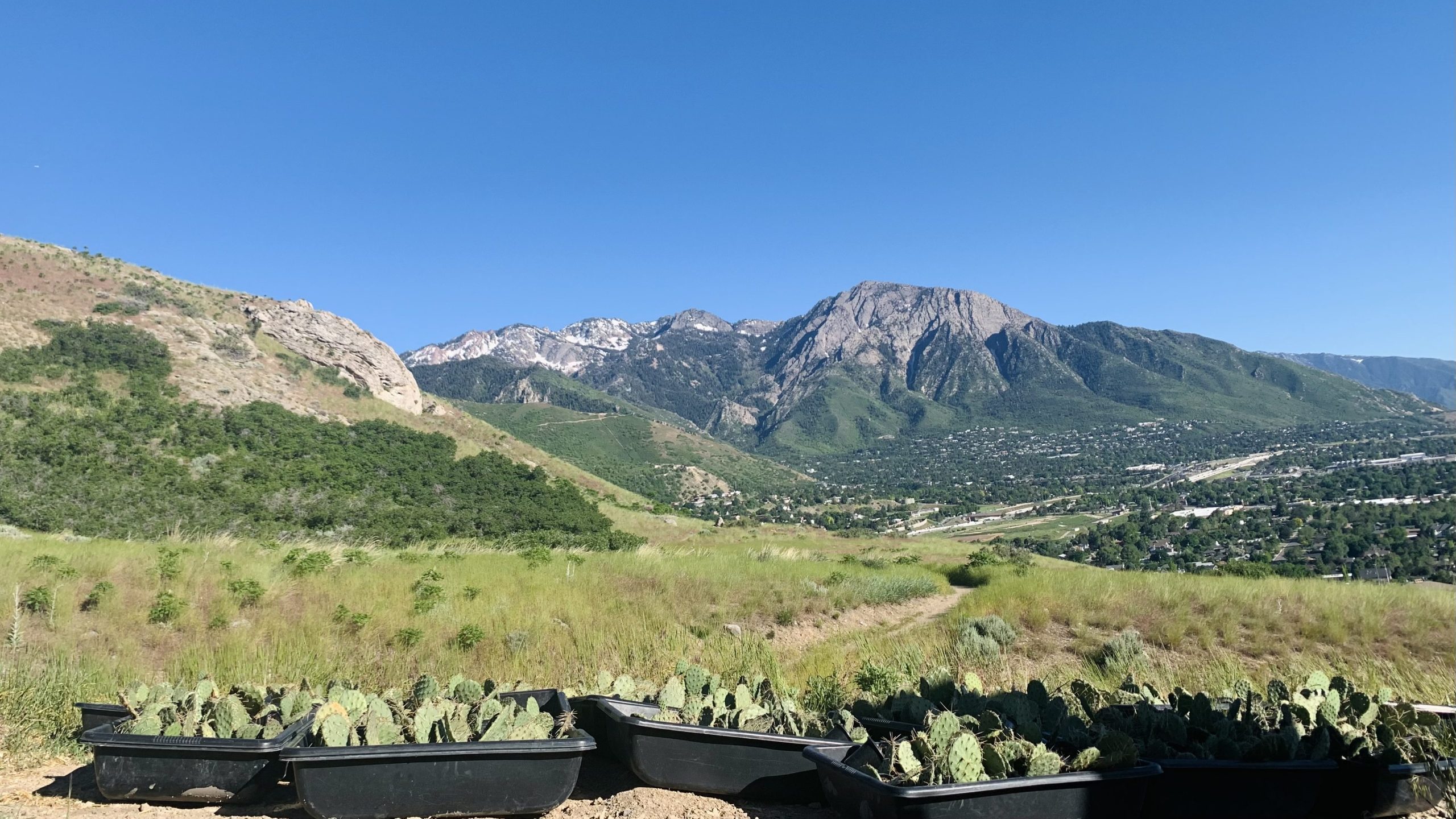
Restoring the Bigroot Prickly Pear Cacti to Our Foothills
In early June 2024, over 40 volunteers gathered in the SLC Foothills to plant 870 Bigroot Prickly Pear (Opuntia macrorhiza) cacti. This exciting project, one that is more than 5 years in the making, will mark the return of a significant population of the Bigroot Prickly Pear to our Foothills, benefiting surrounding native vegetation and wildlife alike.
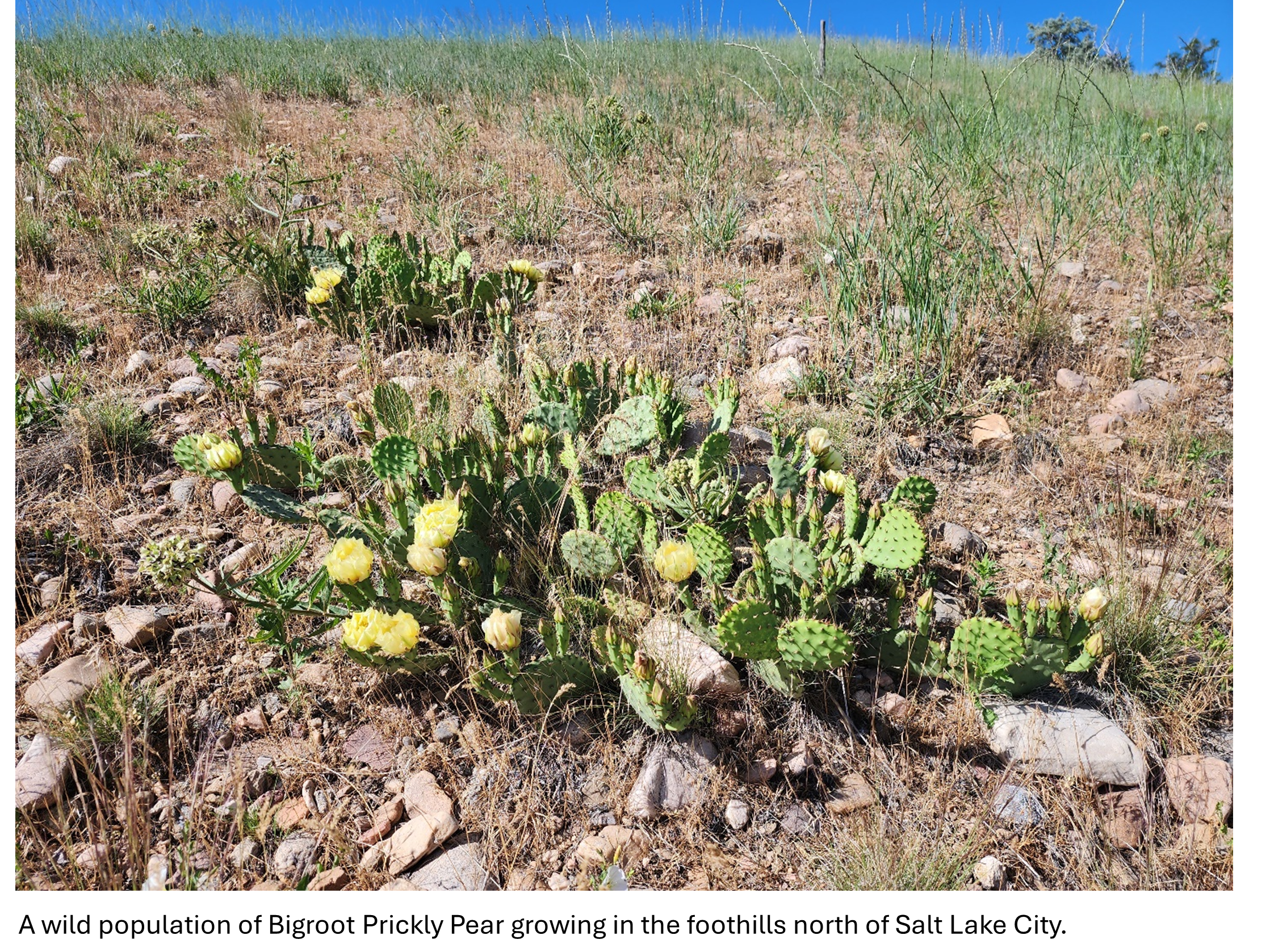
About Bigroot Prickly Pear Cacti
These native plants, once prevalent in Salt Lake City, have experienced a population decline and elimination in some spaces. In the Salt Lake Valley, the cacti often grow naturally where wild and urban landscapes meet, making them vulnerable to human development.
When thriving, the cacti are a valuable food source for wildlife and pollinators, making them an essential part of our natural ecosystem.
How to identify the species
Bigroot Prickly Pear cacti are characterized by oblong, green-yellow pads with spines typically present only on the upper 1/3 of the cactus pad. Its flowers have yellow petals with red centers and cream-colored stigma. The fruit is succulent and fleshy with red juice, long and tapered like a wine glass. These cacti are perennial and evergreen, growing up to 12″ tall.
The Bigroot Prickly Pear is often confused with the Plains Prickly Pear (Opuntia polyacantha) and its hybrids. The Plains Prickly Pear has spines that are evenly distributed, absent, or reduced. Its pads are a mix of large and small, unlike the consistent pads of the Bigroot Prickly Pear.
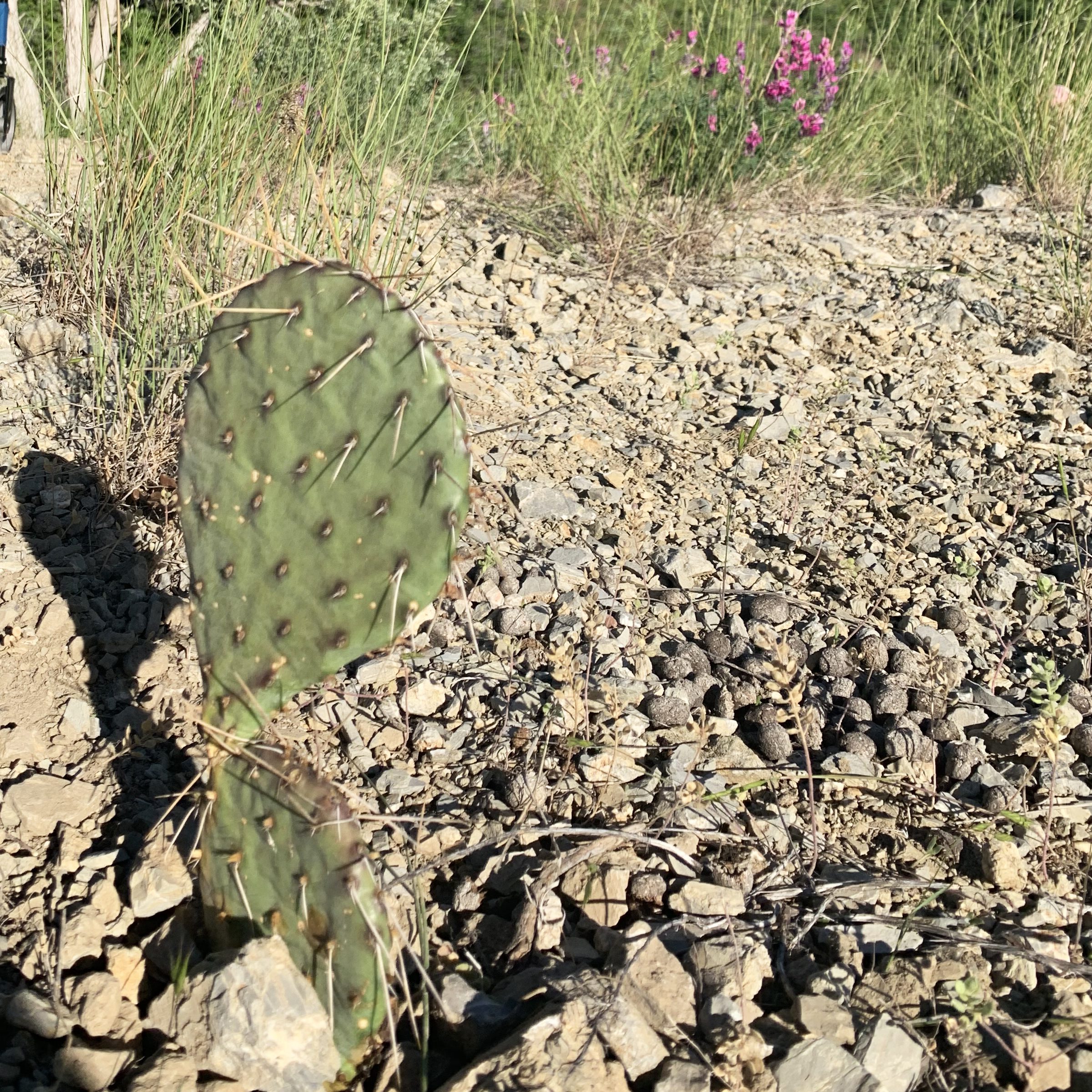
How SLC Trails and Natural Lands began growing Bigroot Prickly Pear
In 2019, Salt Lake City’s Public Lands Native Plant Program began growing this species on a small farm behind the Public Lands building. The initial seeds and cuttings were sourced from five cactus populations across the Wasatch Front. Eventually, a portion of the seedlings were moved into the Liberty Park Greenhouse, where production increased. The Native Plant Program now supports nearly 300 fully-grown Bigroot Prickly Pear, which made the recent Foothills plantings possible. Farming the cactus in the greenhouse ensures there will be a large volume of healthy plants available for annual plantings and restoration projects.
- 2019 – Ten Bigroot Prickly Pears planted in planter bowls behind the public lands building. These plants survived the winter and were determined suitable for production.
- Summer 2020 – The first Bigroot Prickly Pear grown in the greenhouse for farm production
- Winter 2020 – The first Bigroot Prickly Pear planted in production beds at the public land farm
- Summer 2021 – Bigroot Prickly Pear more than doubled in size.
- 2022 – First fruits harvested to extract the seeds.
- Summer 2023 – Bigroot Prickly Pear finally reached a size in which it is ready to harvest pads
- Fall 2023 – Bigroot Prickly Pear produced over 70 pounds of fruit
- Winter 2024 – 870 Bigroot Prickly Pear pad sections harvested for greenhouse production
- June 2024 – Bigroot Prickly Pear transplanted into the foothills at Parley’s Pointe
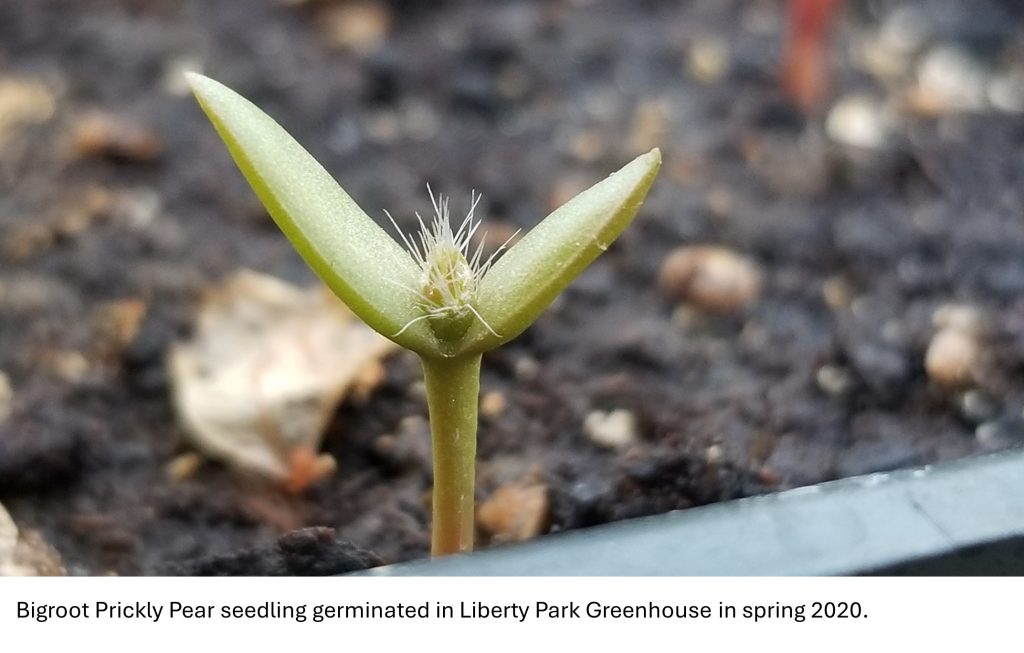
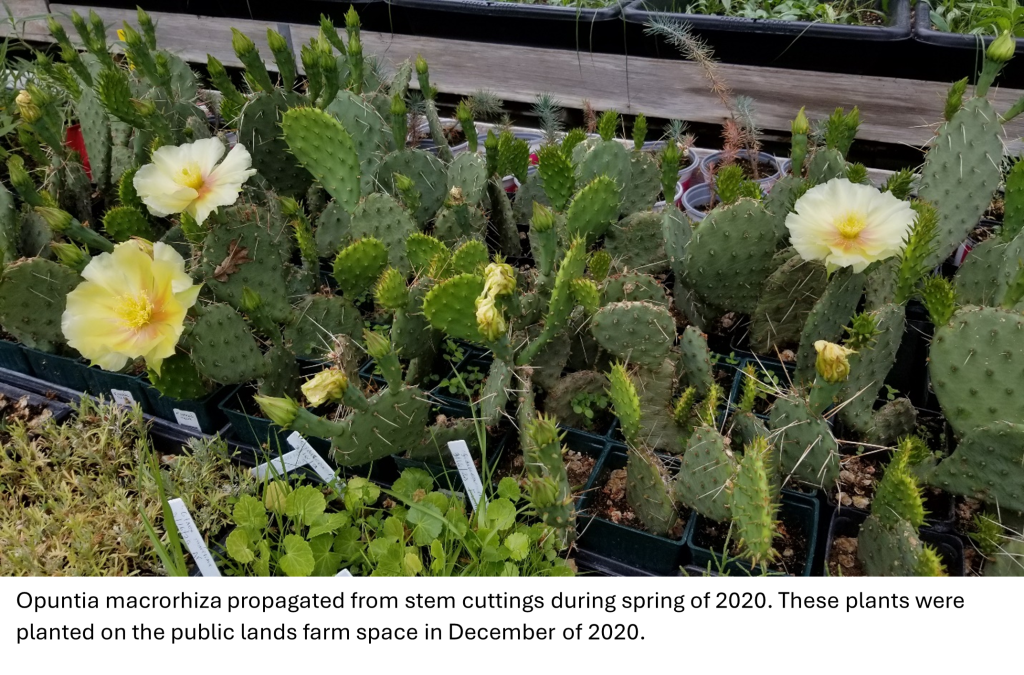
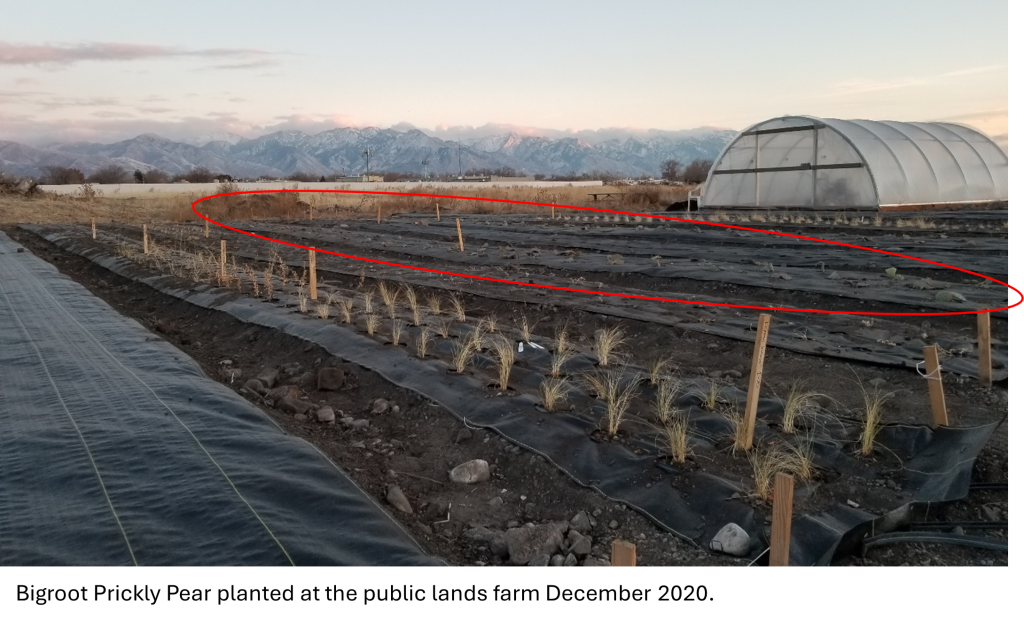
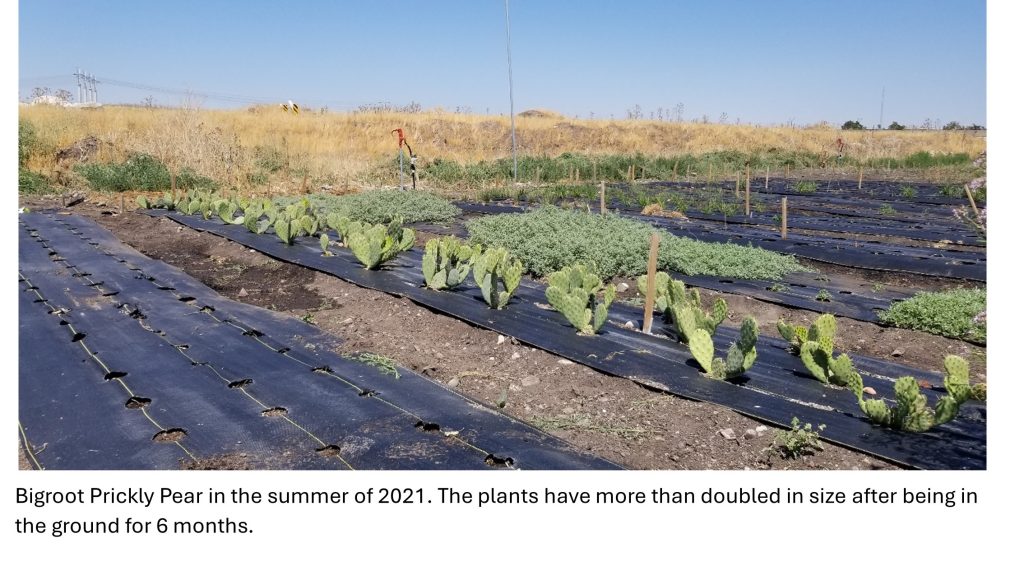
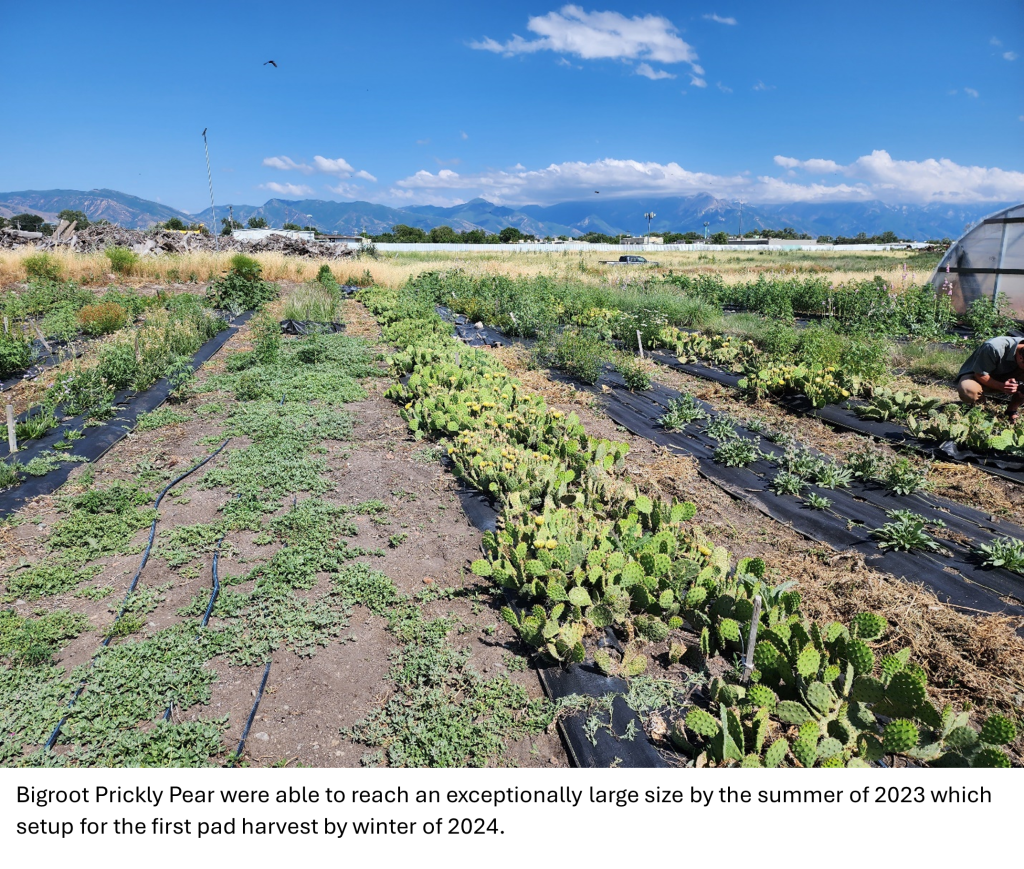
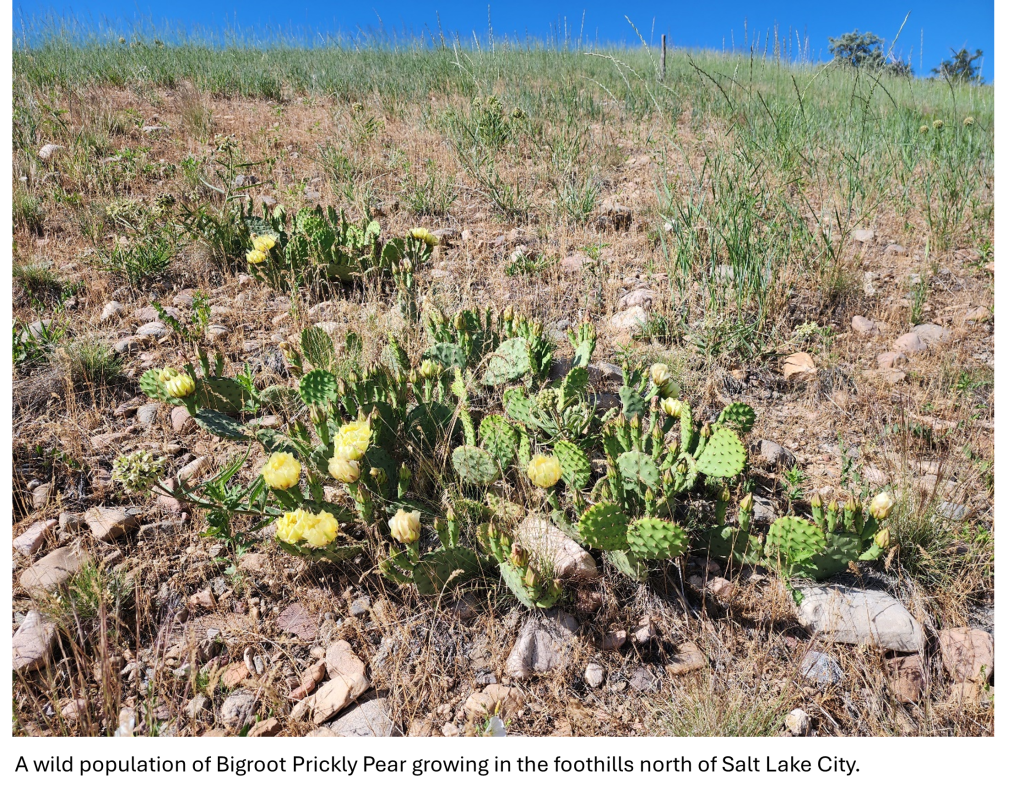
HOW CAN YOU HELP?
If you think you have found a Bigroot Prickly Pear, please consider posting your photos to iNaturalist. Public Lands ecologists frequently review the cactus photos and information posted there. Your findings could help conserve this species in Utah!
If you would like to assist with similar future projects, view our calendar and sign up for a future event at slc.gov/stewardship/

We can all be good stewards of our public spaces! For more tips on how to Be W.I.L.D. – Welcoming, Inclusive, Limit Your Impact, and Do What You Can – visit slcbewild.com.